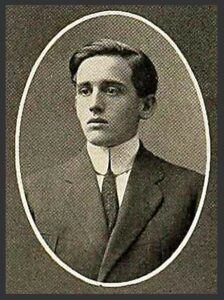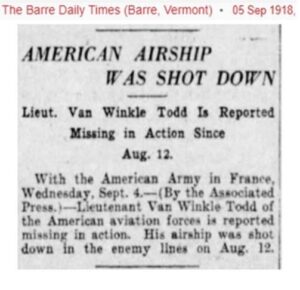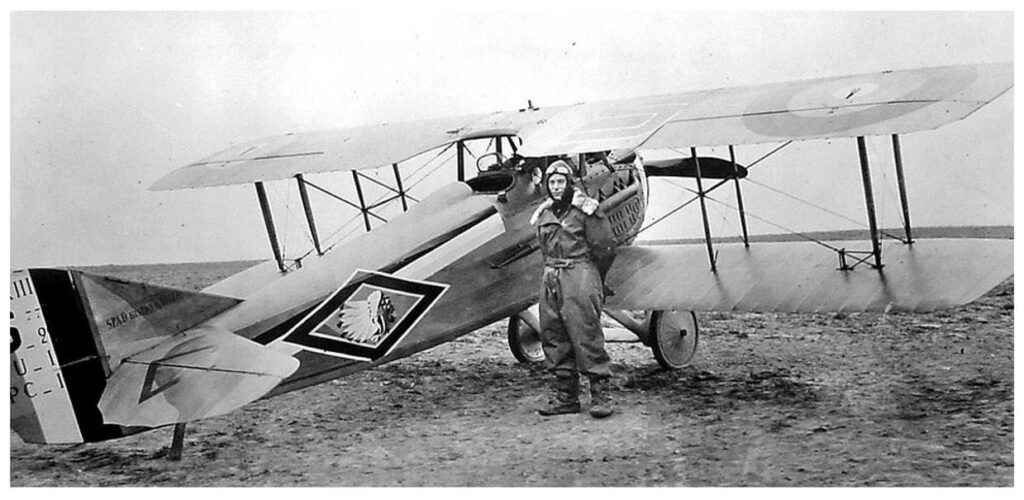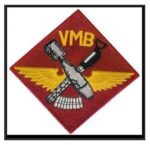 Van Winkle Todd, born October 25, 1892 in Newark, NJ, was the grandson of Abraham Van Winkle (1838-1915), the founder of the electroplating company Hanson-Van Winkle Co. of Newark. Todd was the son of Edmond Neville Todd (1859-1925) and Anna Van Winkle (1868-1917). When that company merged with A P Munning Co in Matawan in 1928, Todd relocated to the borough, moving into 167 Main Street in July of that year. A P Munning was the chairman of the newly formed Hanson-Van Winkle-Munning Co., while Todd was its president.
Van Winkle Todd, born October 25, 1892 in Newark, NJ, was the grandson of Abraham Van Winkle (1838-1915), the founder of the electroplating company Hanson-Van Winkle Co. of Newark. Todd was the son of Edmond Neville Todd (1859-1925) and Anna Van Winkle (1868-1917). When that company merged with A P Munning Co in Matawan in 1928, Todd relocated to the borough, moving into 167 Main Street in July of that year. A P Munning was the chairman of the newly formed Hanson-Van Winkle-Munning Co., while Todd was its president.
Todd married Francis Loraine Timpson (1889-1971) in South Orange on October 31, 1914 and they subsequently had four daughters, Barbara (1915-2000), Phyllis (1915-1995), Margaret (1920-2010) and Anne (1921-1962). All four children grew up in Matawan.
Having completed his course of studies at the Lawrenceville school in 1911, he went on to attend and subsequently graduate from Princeton in 1916. During World War I, he served as a fighter pilot in the 103rd Aerial Squadron in France.
When the United States entered WWI, the volunteer Lafayette Escadrile was disbanded, and American pilots transferred to a purely American squadron, the 103rd. It saw the longest action of the war, from February 19th to the war’s end on November 11, 1918. Two aces belonged to the squadron. Fifty-nine (59) pilots served with six being killed in action, two being shot down and becoming POWs. Todd was in the latter category.
 On August 12, 1918, Todd was shot down behind enemy lines, and the story made national news. It wasn’t until after the war had been over for two weeks that it was determined that he was in a German POW camp. The picture below shows a squadron mate in front a French Spad flown by the squadron.
On August 12, 1918, Todd was shot down behind enemy lines, and the story made national news. It wasn’t until after the war had been over for two weeks that it was determined that he was in a German POW camp. The picture below shows a squadron mate in front a French Spad flown by the squadron.
 In 1931, a former German soldier immigrated to the United States and brought with him a picture of a Spad that had been shot down behind enemy lines and wondered what had happened to the pilot. The American Legion put the story together and determined it was Todd’s aircraft. The remarkable article, which details his air combat that day, is here (link to newspaper article: Rochester Democrat and Chronicle). A link to a PDF transcript of the January 1931 American Legion article is here: Todd-Transcript: American Legion Monthly).
In 1931, a former German soldier immigrated to the United States and brought with him a picture of a Spad that had been shot down behind enemy lines and wondered what had happened to the pilot. The American Legion put the story together and determined it was Todd’s aircraft. The remarkable article, which details his air combat that day, is here (link to newspaper article: Rochester Democrat and Chronicle). A link to a PDF transcript of the January 1931 American Legion article is here: Todd-Transcript: American Legion Monthly).
Todd served as President of H-VW-M from 1927 to 1948, at which time he served as Chairman of the company’s board of directors until his death in 1959. He and his wife are buried in the Fair View Cemetery in Middletown.
A 1941 article in the Matawan Journal reported that his two oldest daughters, Barbara and Phyllis, took war time jobs at H-VW-M. In May of 1940, Phyllis married Edward Porter Ellis at the Todd residence on Main Street. Ellis, a Cornell graduate, was employed as an electrical engineer at H-VW-M. Ellis was subsequently commissioned as a US Naval Officer as an engineer and found himself on Okinawa during the last days of the Pacific war.
 On July 27, 1945, Ellis was listed as a “passenger” on the manifest of a USMC PBJ (the Navy’s equivalent of a B-25 two engine medium bomber.) It is unclear as to why he was aboard, a naval officer with an otherwise all Marine crew. The planes had recently been equipped with the “Tiny Tim” air-to-ground rocket that the Marine’s squadron, VMB 612, was using in an anti-shipping role.
On July 27, 1945, Ellis was listed as a “passenger” on the manifest of a USMC PBJ (the Navy’s equivalent of a B-25 two engine medium bomber.) It is unclear as to why he was aboard, a naval officer with an otherwise all Marine crew. The planes had recently been equipped with the “Tiny Tim” air-to-ground rocket that the Marine’s squadron, VMB 612, was using in an anti-shipping role.  He may have been a “technical expert” assigned to the plane to assist with the new rocket technology or, since the war was almost over, was just going on a flight for the experience as a “ride along” – the missions weren’t that hazardous, firing stand-off rockets at whatever little remained of the Japanese navy. Hostile air threats did not seem to be a big factor at that time. Because of his engineering experience, I suspect it was the first case.
He may have been a “technical expert” assigned to the plane to assist with the new rocket technology or, since the war was almost over, was just going on a flight for the experience as a “ride along” – the missions weren’t that hazardous, firing stand-off rockets at whatever little remained of the Japanese navy. Hostile air threats did not seem to be a big factor at that time. Because of his engineering experience, I suspect it was the first case.
The War Diary of VMB-612 has the following annotation for July 27th:
“One PBJ attacked a 125’ ocean going tug last night. Tug is believed sunk. The same aircraft sighted a Japanese subchaser, and having no rockets, a bombing run was made and an M46 photo flash bomb was dropped. The bomb exploded a few feet aft of the superstructure, undoubtedly injuring any personnel on the deck. Meager inaccurate anti-aircraft fire was encountered on both attacks. Another PBJ attacked and probably sunk a 100-foot patrol craft.”
There was a subsequent entry on July 28th regarding the previous day:
“PBJ, Bureau Number 35242, and crew of three officers and four enlisted men did not return from last night’s mission. The aircraft was last contacted on VHF near Hachijo Jima, at that time the PBY was returning to base on single engine and apparently all right. There was no enemy contact last night.”
While the main base for VMB-612 was Chimu Field in Okinawa, this plane must have been operating out of recently captured Iwo Jima. The range of a B-25 is around 1350 miles, and Hachijo Jima is 870 miles from Okinawa, but only 580 miles from Iwo.
Also lost with Ellis were:
- Pilot Myron Christian Peterson, 1st LT, USMC, 25 years old, of Brookings, SD. The 4th of 11 children, he helped on the family farm before the war. In 1943, he married Phyllis Halstead, who remarried in 1947 after his death. They had no children.
- A/C Engineer Calvin Alfred Swallow, 1st LT, USMC, 22, an only child from Pasadena, Ca.
- Frank Brown, TSGT, USMC, radio operator, 26. Brown and Ellis had two things in common – both were born in England and both were from New Jersey. Brown had worked for RCA and lived with his widowed mother in Camden before the war.
- Paul John Teckenbrock, Sgt, USMC, 23, gunner, was the oldest of three sons from Metropilis, Il, although he enlisted from Paducah, Ky.
- Glenn Hayward Owen, Cpl, USMC, 19, gunner was the oldest of two children from Cicero, Il.
- Abram Wayne Stevens, Sgt, USMC, 19, gunner, was the youngest of three children of widowed mother from Holton, In. The youngest of the crew, he had turned 19 only eleven days before his death.
Ellis, at 30, was the oldest on board the aircraft. Besides his wife, he left a one-year old daughter, Margaret Katherine. Phyllis never remarried and died in the State of Washington in 1995.
On September 2, 1945, just a little over a month after Ellis and his crew were lost, Japan surrendered.
Todd Van Winkle’s Descendant Chart may be viewed here: Descendants of Van Winkle Todd

NO COMMENTS